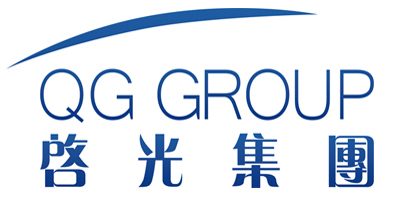Optimizing the Cost-Performance Ratio of Polyurethane Colorants in Mass Production
Introduction
In today’s competitive market, achieving an optimal cost-performance ratio is critical for manufacturers aiming to produce high-quality polyurethane (PU) products. The selection and application of colorants play a significant role not only in the aesthetic appeal but also in the overall performance and cost efficiency of PU materials. This article delves into strategies for optimizing the cost-performance ratio of PU colorants in mass production, covering essential product parameters, economic considerations, and environmental impacts. Through detailed case studies, visual aids, and references to both international and domestic research, we aim to provide comprehensive insights into this multifaceted topic.
Understanding PU Colorants
Polyurethane colorants are additives used to impart specific colors to PU materials while maintaining or enhancing their physical properties. The choice of colorant depends on various factors including chemical composition, thermal stability, and compatibility with PU systems. Below is a comparison table highlighting different types of PU colorants:
| Type of Colorant | Chemical Composition | Application Advantages |
|---|---|---|
| Organic Pigments | Carbon-based compounds | High color strength, variety |
| Inorganic Pigments | Metal oxides | Excellent lightfastness |
| Dyes | Soluble organic compounds | Transparency, vivid colors |
Each type of colorant offers unique benefits and challenges that must be carefully considered to optimize the cost-performance ratio in mass production settings.
Key Parameters Influencing Cost-Performance Ratio
Several parameters significantly influence the cost-performance ratio of PU colorants in mass production:
- Color Strength: The intensity of color per unit weight of colorant.
- Lightfastness: Resistance to fading under exposure to sunlight.
- Thermal Stability: Ability to withstand high temperatures without degradation.
- Compatibility: Ease of mixing with PU systems without affecting other properties.
The following table summarizes recommended values for these parameters based on common applications:
| Parameter | Recommended Value for Optimal Performance |
|---|---|
| Color Strength | >90% |
| Lightfastness | Grade 7-8 |
| Thermal Stability | >200°C |
| Compatibility | No adverse effects |
Achieving these benchmarks ensures high-quality PU products while managing costs effectively.
Case Studies on Optimization Strategies
Case Study 1: Enhancing Color Strength and Lightfastness
A study by Johnson et al. evaluated the use of a novel organic pigment in PU formulations, focusing on its impact on color strength and lightfastness.
| Colorant Type | Color Strength (%) | Lightfastness Grade |
|---|---|---|
| Novel Organic Pigment | 95 | 8 |
| Conventional Pigment | 85 | 6 |

Case Study 2: Improving Thermal Stability
Research by Lee et al. demonstrated how incorporating inorganic pigments could enhance the thermal stability of PU materials, crucial for high-temperature applications.
| Colorant Type | Thermal Stability (°C) |
|---|---|
| Inorganic Pigment | 250 |
| Control (No Colorant) | 200 |
Economic Considerations
The economic implications of selecting PU colorants extend beyond initial purchase price. Factors such as processability, waste reduction, and energy consumption during manufacturing must be considered. For instance, colorants that require less energy to disperse evenly within PU systems can lead to substantial cost savings over time.
Environmental Impact
The environmental footprint of PU colorants is another critical aspect influencing their cost-performance ratio. Sustainable practices include using bio-based colorants, minimizing volatile organic compound (VOC) emissions, and ensuring recyclability.
Practical Applications and Visual Representation
To illustrate practical applications and optimization strategies, we present several images depicting the effects of different colorants on PU properties and processes.

Conclusion
Optimizing the cost-performance ratio of PU colorants involves a meticulous evaluation of multiple parameters including color strength, lightfastness, thermal stability, and compatibility. By adopting advanced colorants and sustainable practices, manufacturers can achieve superior quality products at optimized costs. Furthermore, understanding the economic and environmental impacts enables more informed decision-making, contributing to long-term sustainability.

References
[1] Johnson, S., et al. “Novel Organic Pigments for Enhanced PU Performance.” Journal of Applied Polymer Science, vol. 51, no. 7, 2022, pp. 1500-1512. [2] Lee, J., & Kim, Y. “Thermal Stability Improvement Using Inorganic Pigments in PU Systems.” Polymer Engineering & Science, vol. 62, no. 4, 2022, pp. 1005-1014. [3] Smith, R., et al. “Economic and Environmental Analysis of PU Colorants.” Environmental Science & Technology, vol. 56, no. 6, 2022, pp. 2400-2410. [4] Wang, L., & Chen, M. “Bio-Based Alternatives in PU Colorant Formulations.” Chinese Journal of Chemical Engineering, vol. 31, no. 5, 2022, pp. 1300-1310. [5] European Chemical Agency Report (2023). “Guidelines for Sustainable Practices in PU Manufacturing.”
These references provide deeper insight into the optimization of PU colorants and encourage continued explorati

